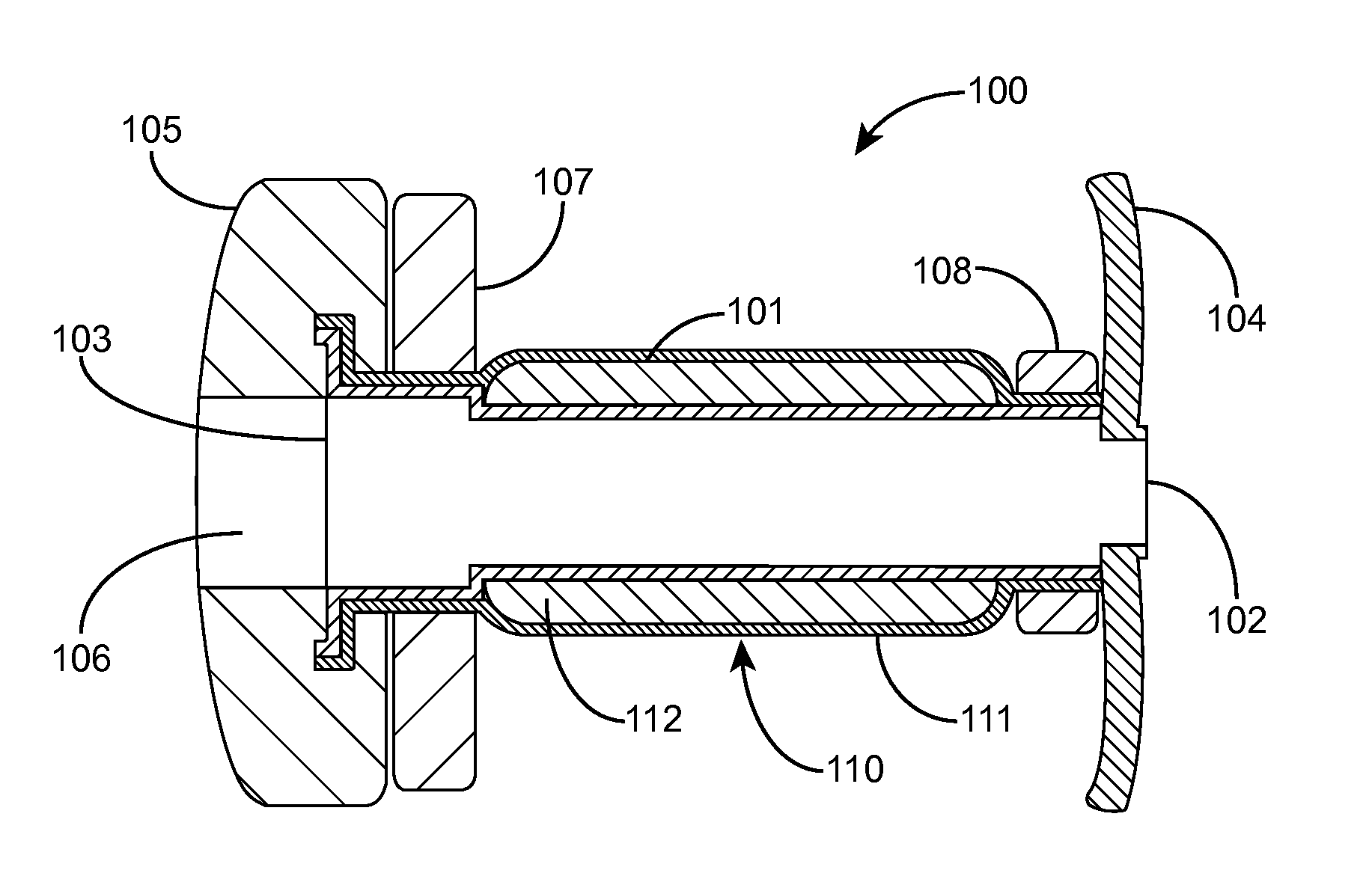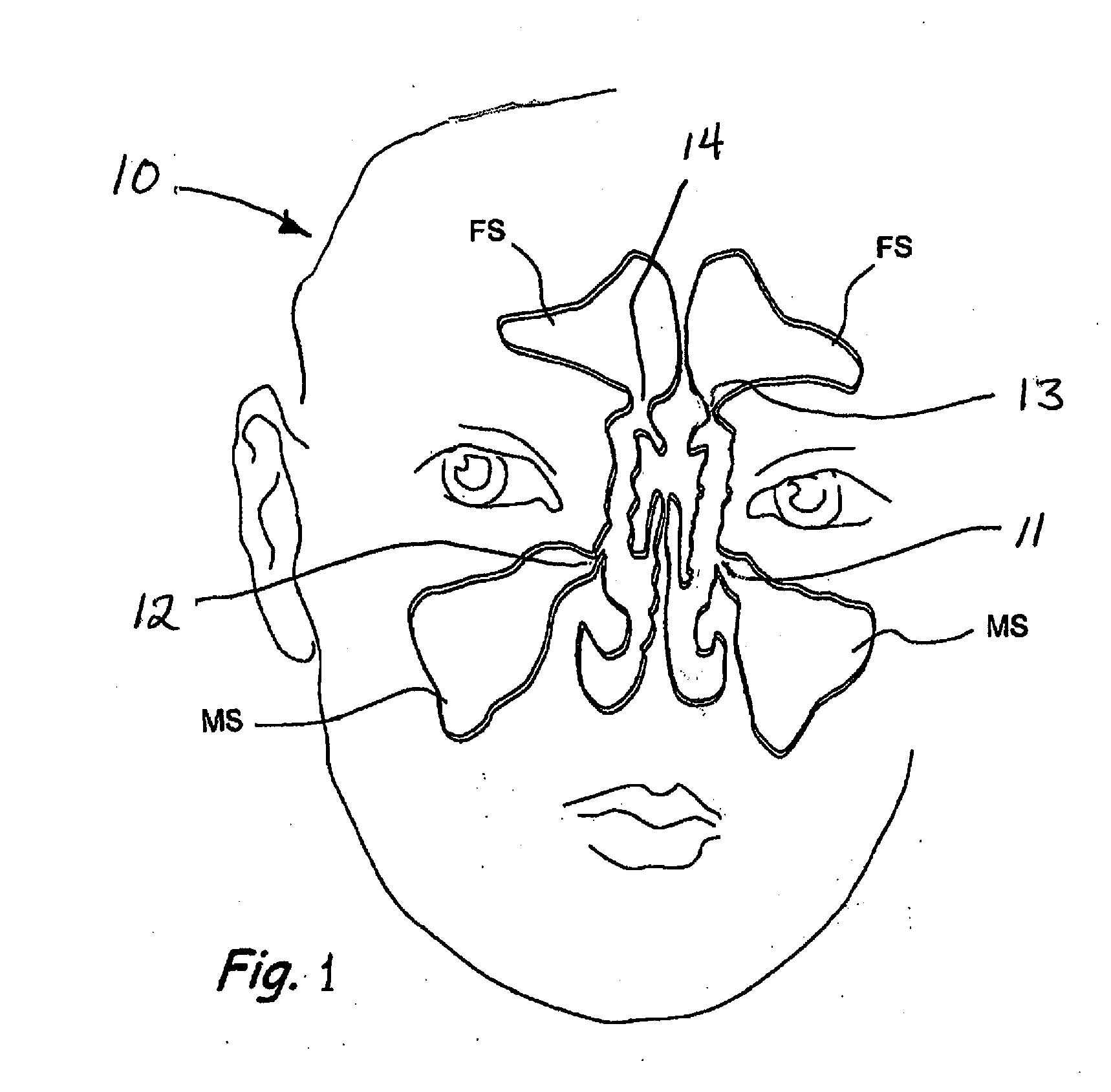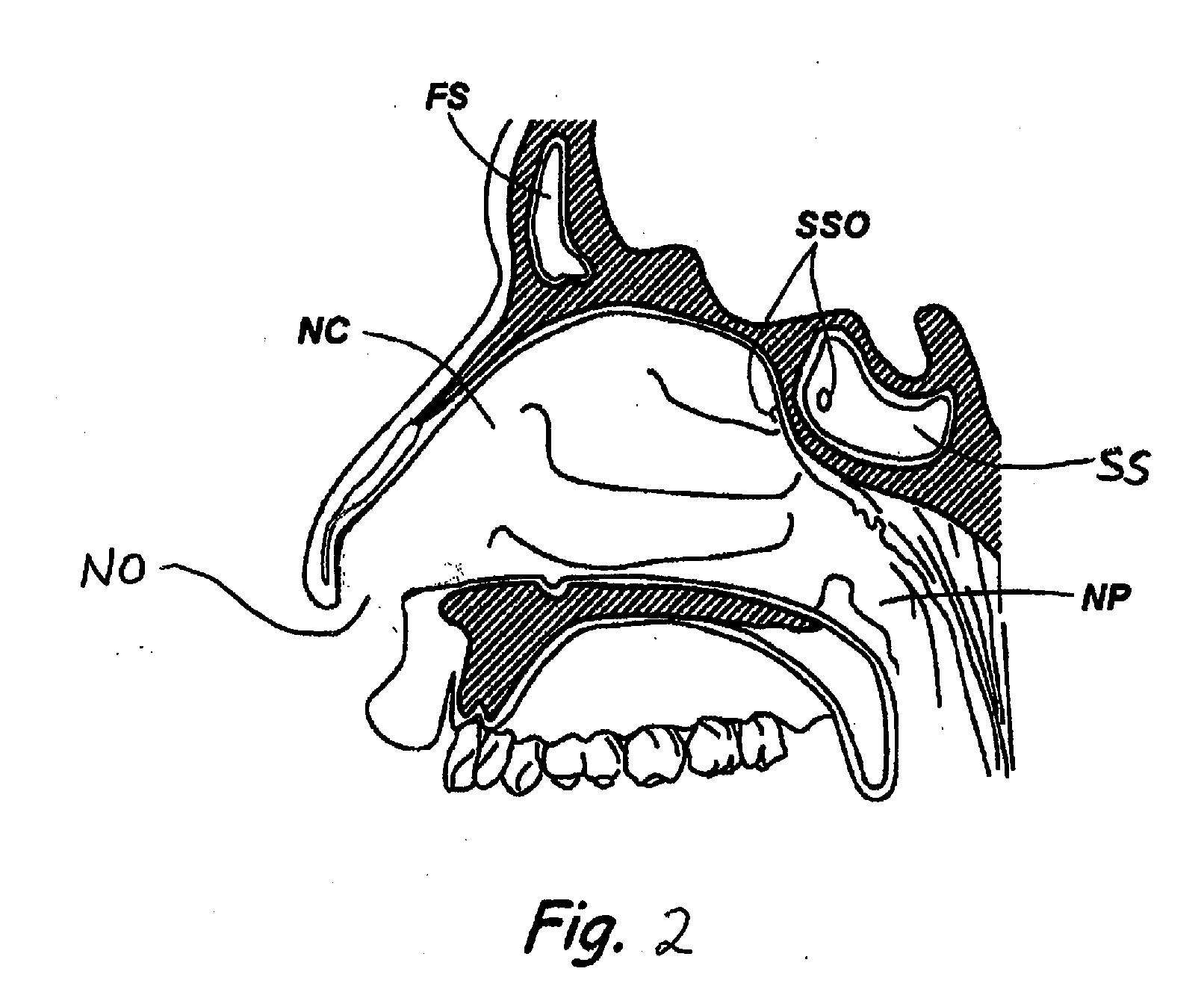Devices and Methods for Dilating a Paranasal Sinus Opening and for Treating Sinusitis
a paranasal sinus and opening technology, applied in the field of paranasal sinus opening and sinusitis treatment, can solve the problems of mucosal congestion within the paranasal sinuses, damage to the epithelium that lines the sinus, and obstruction of the drainage passageway, and achieve the effect of facilitating the dilation of the stenotic opening
- Summary
- Abstract
- Description
- Claims
- Application Information
AI Technical Summary
Benefits of technology
Problems solved by technology
Method used
Image
Examples
example 1
[0250]Three different designs of an osmotic dilator for dilating and remodeling the ostium of a maxillary sinus over a period of 3 to 4 hours were fabricated.
[0251]External Elastic Semipermeable Membrane Design
[0252]The osmotic driver was prepared by passing 11.0 g of ultrahigh molecular weight polyethylene oxide (Polyox™ Sentry Grade WSR 303 LEO National Formulary, having a viscosity in water at 1% solids of approximately 8,700 centipoise, and a molecular weight of approximately 7 million; Colorcon®, Inc., West Point, Pa.) through a 100-mesh sieve into a beaker. 12.5 g of sodium chloride was ground to a fine powder in a mortar with pestle and passed through the 100-mesh sieve. The polyethylene oxide and sodium chloride were mixed together in a beaker with a spatula. 1.25 g of hydroxypropyl methyl cellulose (Methocel™ E5 Premium LV having an aqueous viscosity at 2 weight percent solids of approximately 5 centipoise; Dow Chemical Company, Midland, Mich.) was sized through the 100-mes...
example 2
[0260]The performance of the external membrane design dilator 150 (see FIG. 23) made in accordance with Example 1 was evaluated in vitro. The dilators were tested in a media of 500 ml distilled water at 37° C. using a U.S. Pharmacopeia Type 2 paddle tester with a paddle speed of 50 revolutions per minute. Two dilators were tested. Dilator weight gain and diameter were monitored as a function of time. FIGS. 26A and 26B illustrate the results, respectively. The dilators 150 exhibited a steady increase in both weight and diameter over a period of approximately 4 hours. The dilators swelled uniformly and symmetrically throughout the test period to achieve a final dilated shape as shown in FIG. 24. The swelling was achieved by the salt and Polyox in tablets 153, 155 causing water to permeate through the semipermeable membrane 155, which in turn caused the Polyox to swell. The swelling tablets caused the membrane 155 to stretch in order to accommodate the increased volume of the tablets 1...
example 3
[0262]The three osmotic dilator designs made in accordance with Example 1 were also tested in vivo in sheep since the sheep is a recognized model for the human sinus anatomy (Gardiner et al., Journal of Laryngology and Otology, May 1996, Vol. 110, 425-428). Each device was measured (outer diameter of the device), weighed and photographed prior to insertion. Under endoscopic examination using a 30 degree endoscope, a probe was first inserted into the nasal cavity of live anesthetized adult sheep and a 3 mm diameter opening was punctured through the thin wall separating the nasal cavity and maxillary sinus cavity in both maxillary sinuses of each animal. An osmotic dilator was inserted into each of the two maxillary sinus openings such that the distal anchor was located inside the maxillary sinus and the proximal anchor remained within the nasal cavity, thereby anchoring the dilators within the respective openings. After epistaxis was noted in the first few insertions, topical 0.5% ox...
PUM
 Login to View More
Login to View More Abstract
Description
Claims
Application Information
 Login to View More
Login to View More - R&D
- Intellectual Property
- Life Sciences
- Materials
- Tech Scout
- Unparalleled Data Quality
- Higher Quality Content
- 60% Fewer Hallucinations
Browse by: Latest US Patents, China's latest patents, Technical Efficacy Thesaurus, Application Domain, Technology Topic, Popular Technical Reports.
© 2025 PatSnap. All rights reserved.Legal|Privacy policy|Modern Slavery Act Transparency Statement|Sitemap|About US| Contact US: help@patsnap.com



